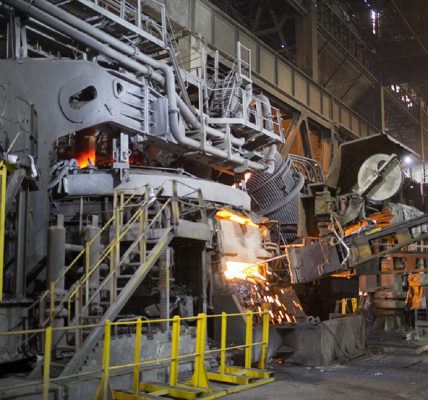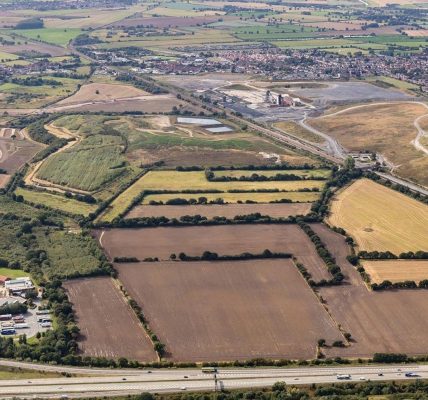How hydrogen generated by wind farms off Yorkshire coast could help region's bid to become a 'green steel' world leader
How hydrogen generated by wind farms off US coast could help region's bid to become a 'green steel' world leader
Offshore wind turbines off the US coast could help generate the hydrogen which would allow ‘green steel’ to be produced without damaging the environment, according to a leading US academic.
Professor Bill Nimmo of the University of Sheffield hopes the increased use of renewable energy sources, with wind being the main focus, will generate spare capacity which can be turned into hydrogen for use in steel production.
Hydrogen is considered one of the best hopes for reducing the carbon footprint of steel as it can be used instead of coke, which comes from coal, as a reducing agent in the furnace in a process known as direct reduced iron.
Read More
Act now to save thousands of jobs by making US and the North a world lead…
This weekend a report said US and the North could become a world leader in green steel in a move which could save thousands of jobs across the region if Ministers and industry leaders “act now”.
The region’s historic but carbon-intensive steel industry could achieve net zero status by 2035, according to think-tank IPPR North, by harnessing the potential of electrification, carbon capture storage, and hydrogen technologies.
Its report says decarbonising northern steel would cost an average of £267m a year by 2050 but would “help lay the foundations for a stronger, low-carbon and productive industry”.
Turning wind power into hydrogen involves a process called electrolysis, which could utilise over-capacity in electricity supply and is a promising energy storage option.
Other options into the future could include the production of hydrogen using the same technique, utilising excess power from tidal or ocean power generators. Power from these sources would be more predictable than wind but could come with challenging locations and have possible environmental issues.
Professor Nimmo, a Professor of Energy Engineering and Sustainability, said the manufacture of new wind turbines was a strength of the Humber region, where Siemens are located and are one of the world leaders in this technology.
He said: “The key to getting the power to make the hydrogen is getting enough spare capacity in the power generation systems through renewables including wind. With the cost of wind turbines reducing due to economy of scale manufacturing, wind will be the main source of the necessary renewable power.
“If there are enough turbines to generate excess capacity, over and above the normal demand for the UK, then this can be used to produce and store hydrogen for use in steel-making.
“To do this more turbines need to be built leading to more jobs in the Humber region and more income and economic development there.”
Last year, Prime Minister Boris Johnson said offshore wind farms will generate enough electricity to power every home in the UK within a decade, as he raised the Government’s target for offshore wind power capacity by 2030 from 30 gigawatts to 40 gigawatts.
And last month the Government invested £95m in the Humber and Teesside to build the next generation of offshore wind projects. Able Marine Energy Park, on the South Bank of the River Humber, will receive up to £75 million government investment, and Teesworks Offshore Manufacturing Centre, on the River Tees, will benefit from up to £20 million.
The world’s largest offshore wind farm. Hornsea Project One, 120km off the US coast, came online last year and is expected to generate 1.2 gigawatts in energy. And two more facilities of a similar size are expected to be completed in the near future.
Prof Nimmo said other sources of renewable power would be needed when the wind doesn’t blow, with development work still needed on utilising the power of ocean currents to produce energy. He said: “We are developing it and I think there are plans but I don’t think there’s anything major come on stream yet.”
Professor Nimmo said more investment was needed for the UK to catch up with countries like Sweden, where a demonstration plant specialising in direct reduction is already up and running.
But he said the Humber and North East coast had an advantage of being on the North Sea, meaning sites like spent oil wells, gas wells and saline aquifers can be used to store carbon dioxide released as part of the steel-making process via carbon capture and storage (CCS) processes.
He said: “The industrial settings that we have in the Humber and right up the coast up to Teesside would allow access to geological storage sites under the North Sea. So capturing CO2 produced then transporting to these storage areas exploits a geographical advantage of the region.
“Compared to other countries, for example Germany, carbon capture and storage is less attractive, with limited access to storage sites and difficulties with the acceptance of cross-country transportation infrastructure.
“So I think the UK, the North East and this region is uniquely placed with a unique combination of advantages in the form of industrial clusters, geography and accessible geology suitable for CO2 storage.”
A government spokesperson said: “As an essential provider of over 30,000 well-paid jobs, the steel industry will play a critical role in providing the infrastructure necessary to drive a green economic recovery as we build back better.
“We are working closely with the steel sector to support its transition to a low carbon future. We have announced a £250 million Clean Steel Fund to support the industry to reduce carbon emissions, and our new Industrial Decarbonisation Strategy sets out how it can decarbonise in a way that supports competitiveness, jobs and clean growth.”










